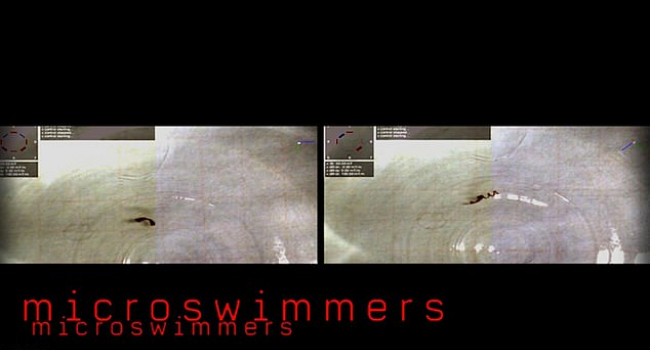- Latest news▼
-
01:20, April 25 Paralyzed man in China writes hieroglyphs using neural implants placed in his brain

-
15:11, April 24 Zombie deer disease possibly linked to hunters’ deaths

-
12:27, April 23 Appetite: Scientists found out the secret to the appeal of large portions of fast food

-
10:33, April 23 Scientists test new approach to fighting viruses

-
08:38, April 23 Ketamine may help with postpartum depression

-
22:12, April 22 Unhealthy amount of sugar found in baby food products of a well-known brand

-
19:41, April 22 Air pollution puts health of more than 1.6 billion workers globally at risk

-
17:25, April 22 Scientists found baked goods and lack of sleep to be more dangerous than alcohol

-
16:02, April 22 342 cases of measles recorded in Armenia so far in 2024

-
15:29, April 22 BrainStimulation: electrical brain stimulation alleviates anxiety and depression in the elderly

-
08:27, April 22 Cognitively stimulating jobs in midlife could lower dementia risk in old age, study finds

-
20:37, April 21 Environmental Health Perspectives: Microplastics ingested with food and water can spread from the gut to the brain

-
22:41, April 20 Scientists develop new method to safely stimulate immune cells to fight cancer

-
20:46, April 20 Blood test can determine who is at risk of developing multiple sclerosis - scientists

-
18:36, April 20 Next pandemic likely to be triggered by flu - scientists

All materials
Drugs may one day be delivered by robots you SWALLOW

Drugs could be delivered by microscopic, shape-shifting robots you swallow in the future, scientists believe.
Researchers have created the tiny gadgets, which are around 5mm in length and can navigate the narrow channels of the human body.
The tiny robots, developed by Swiss researchers, even change shape and speed as they travel through bendy blood vessels and thick bodily fluids.
The engineers at ETH Zurich and École Polytechnique Fédérale de Lausanne (EPFL) have released stunning footage showing the robots in action.
The robots, which are yet to be named, are made up of a gel that responds to heat, with added magnetic nanoparticles.
This allows them to be controlled by an electromagnetic field, the authors wrote in the journal Science Advances.
Using 'origami design principles', the researchers, led by Dr Bradley Nelson, folded the gel into 3D shapes.
To make the robots move effectively, inspiration was drawn from bacteria, which get from place-to-place via a propeller-like tail known as a flagellum.
This was mimicked to create an 'oar-like' extension from the nano-robot, to allow it to swim through the body.
Microorganisms also change shape to 'navigate complex environments and occupy a variety of ecological niches', the authors wrote.
'Nature has evolved a multitude of microorganisms that change shape as their environmental conditions change,' Dr Nelson said.
'This basic principle inspired our microrobot design.'
When tested in a sucrose solution 'with a similar viscosity to blood', the robots 'moved much faster compared to other prototypes', the authors wrote.
They also changed shape to squeeze through glass tubes with lots of bendy passages, before reverting back to their original size.
The robots must be highly flexible if they are to travel through narrow blood vessels and dense fluids at high speeds.
'Our robots have a special composition and structure that allow them to adapt to the characteristics of the fluid they are moving through,' said Professor Selman Sakar, one of the researchers.
'For instance, if they encounter a change in viscosity or osmotic concentration, they modify their shape to maintain their speed and maneuverability without losing control of the direction of motion.'
Changes to the robot's shape can be 'programmed' in advance to maximise the robot's effectiveness without the use of bulky sensors or machinery.
They can then be controlled by an electromagnetic field or left to navigate their own way through the body by following fluid flow.
Either way, they automatically mould into the most efficient shape.
The researchers are working on improving how the robots swim through different fluids in the human body.
If studies are successful, they believe the gadgets will be relatively cheap to produce.
Source: The Daily Mail
Follow NEWS.am Medicine on Facebook and Twitter
- Video
- Event calendar
- Archive
- Most read
month
week
day
- JAMA Oncology: Urine test can help rule out high-grade prostate cancer with almost 100% accuracy, study shows 1264
- Daily Mail: Elderly woman in China gets infected with brain-eating amoeba 1206
- Scientists grow human mini-lungs in lab 1152
- Next pandemic likely to be triggered by flu - scientists 906
- Scientists found baked goods and lack of sleep to be more dangerous than alcohol 816
- 342 cases of measles recorded in Armenia so far in 2024 774
- Scientists develop new method to safely stimulate immune cells to fight cancer 758
- Blood test can determine who is at risk of developing multiple sclerosis - scientists 756
- Cognitively stimulating jobs in midlife could lower dementia risk in old age, study finds 740
- BrainStimulation: electrical brain stimulation alleviates anxiety and depression in the elderly 682
- Unhealthy amount of sugar found in baby food products of a well-known brand 554
- Air pollution puts health of more than 1.6 billion workers globally at risk 552
- Ketamine may help with postpartum depression 537
- Appetite: Scientists found out the secret to the appeal of large portions of fast food 535
- Scientists test new approach to fighting viruses 517
- Find us on Facebook
- Poll





